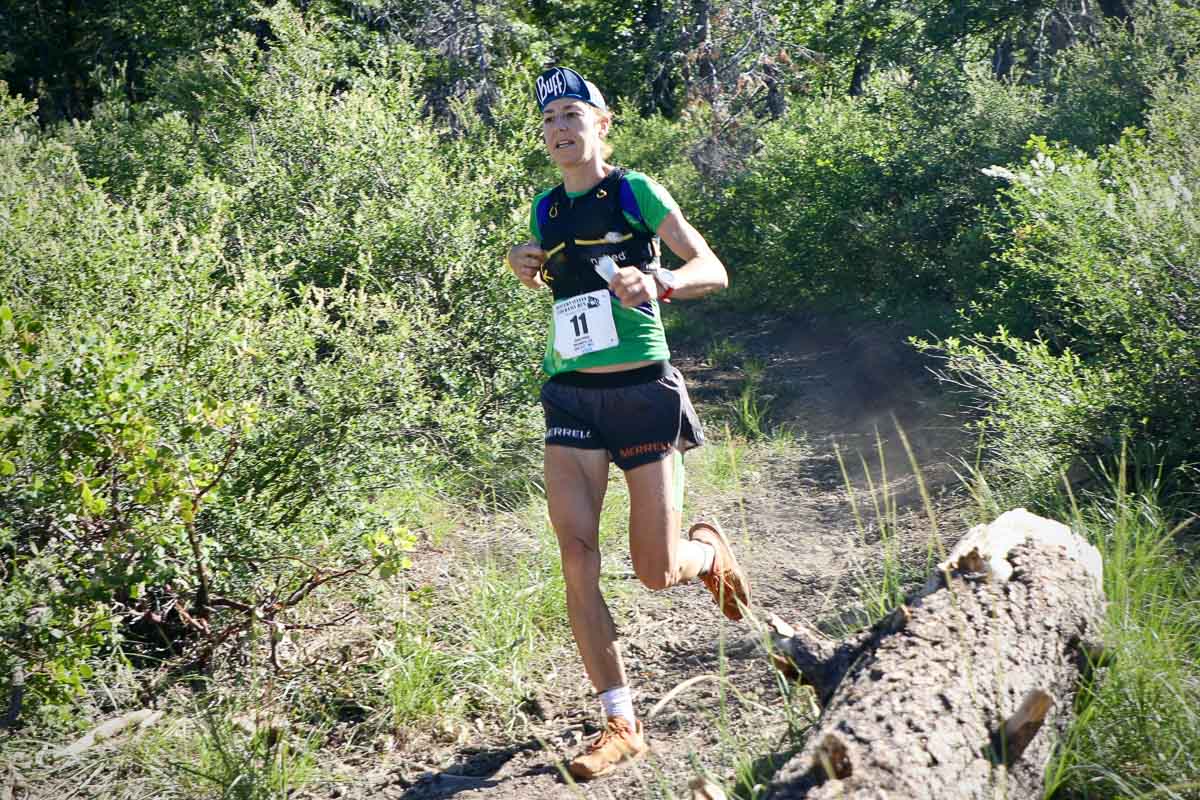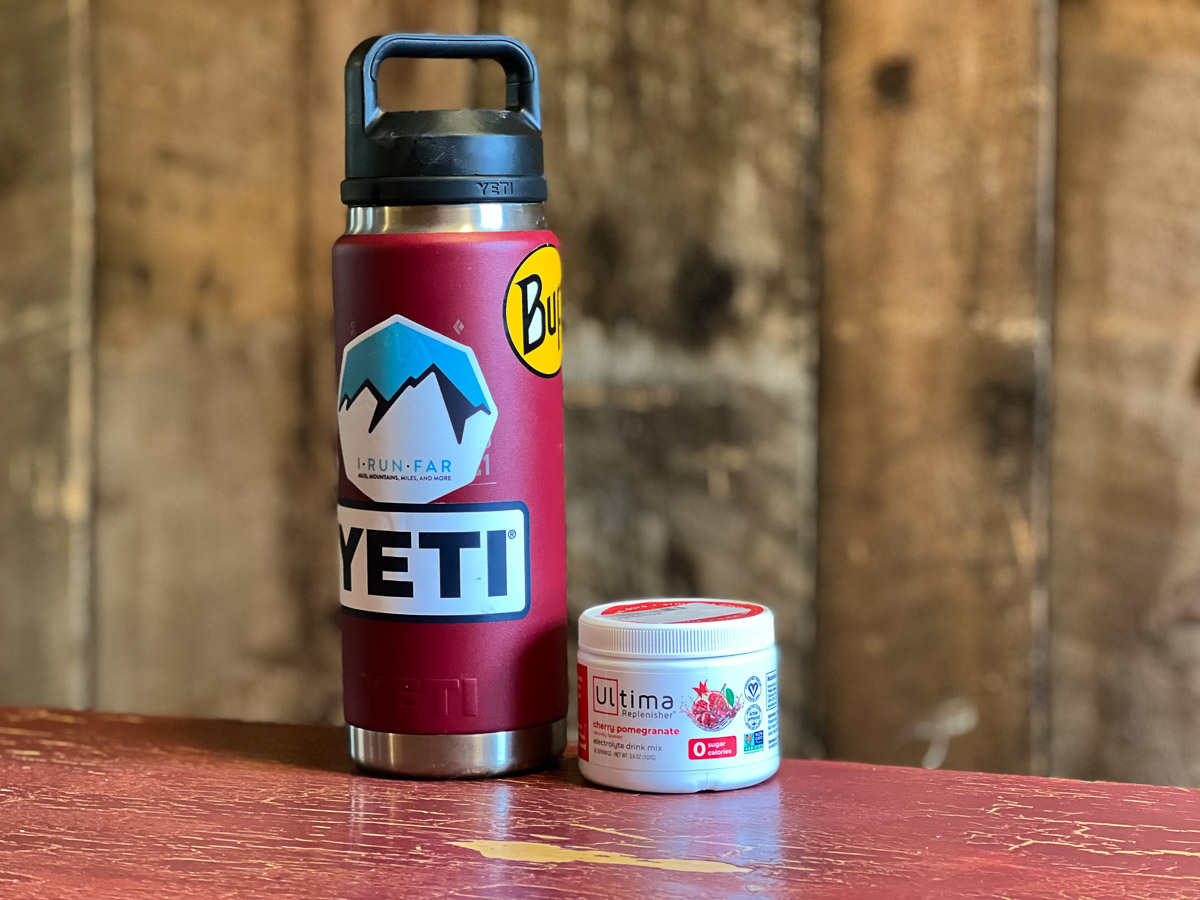 [Author’s Note: This is part two of an occasional series on longevity concepts in endurance running. In this series, we discuss factors that play into our capability and enjoyment of the sport as we progress in both experience and age. Be sure to check out part one and part three as well.]
[Author’s Note: This is part two of an occasional series on longevity concepts in endurance running. In this series, we discuss factors that play into our capability and enjoyment of the sport as we progress in both experience and age. Be sure to check out part one and part three as well.]
In this column last month, I wrote about how I almost quit running. Not from frustration, overt injury, or a change in interests; rather, running began to feel bad. It felt stiff, painful, fatiguing, and — quite frankly — miserable.
My motivation to discuss the concept of quitting running is twofold. First, a gradual withdrawal from what for many of us is our favorite activity in life, based on a steady degradation of how it makes us feel, is far more common than most realize, especially those who are still young, fit, and healthy.
Second, but more importantly, it doesn’t have to be this way. Peak running economy, speed, and performance does fade with age, but the physical comfort, enjoyment, and benefit of running needn’t slowly swirl down the drain, like it has for so many of us.
There is a way to preserve running — to keep it light, easy, fun, and every bit as enlightening as it was that first step, or in our peak performance years. However, it often takes a greater awareness of all the factors that threaten the integrity of our beloved activity.
Why running stops feeling good is multifactorial. Part one of this article series outlined the biomechanical and training factors that can lead us to uncomfortable running. Part two in this article addresses other, non-running physiological factors that can negatively affect the ease and enjoyment of our sport. Part three of this series addresses the psychological factors.
The particular issues we discuss in this article all negatively impacted my running and pushed me to the precipice of quitting. Only by addressing these non-running factors did running ultimately begin to feel good again.
Temporal and Aging Factors
Before diving into non-running physiological factors, it’s important to first outline two powerful forces that affect physical stressors: time and age.
Negative temporal factors have to do with the accumulation of often small stressors that over time have increasingly potent effects on running integrity. Just as the positive temporal factors of daily runs, workouts, and frequent races can progress run performance, negative temporal factors can regress our running.

Ragna Debats on her way to placing third and setting a women’s masters record at the 2021 Western States 100 at 42 years old. All photos iRunFar/Meghan Hicks unless otherwise noted.
Some of these factors are more obvious, but many are insidious. Indeed, issues such as lack of sleep, deficient nutrition, and improper equipment (such as stiff, old shoes) become palpable after a few weeks, if not days, of prolonged exposure. But many other deleterious factors play out microscopically over months or even years.
Factors that play out this slowly are often difficult to even perceive, let alone respond to. They are akin to the frog that boils to death in a pot that heats ever so gradually — but they still exist. Specific non-running factors can become slow-bleed stressors that impair running performance, feel, and recovery.
Aging is temporal, but its effects are non-linear. While a sleep, stress, or dietary deficit may be detrimental over a period of five years, a regression that occurs from age 35 to 40 will be physiologically more stressful than if that regression were to occur from age 25 to 30.
There are several reasons for this, which are outside the scope of this article, but a general explanation is that, when we are younger, our human physiology has more built-in redundancy, or the ability to withstand a greater magnitude and variety of stressors, without compromise in performance, recovery, or fitness. We can stay up later, party harder, and eat or drink less well with fewer consequences.
That margin for error decreases as we age. Put into economic terms, our stress budget gradually shrinks. Yet, rather than suffer overt injury, the body responds to a stress-rest deficit by skimping in other areas, such as impairing top-end speed, mobility, strength, and recovery as well as perceptions of ease and enjoyment.
Accepting the reality of aging isn’t a concession to be slow, stiff, weak, tired, or miserable. Rather, it should give us pause to consider, What longstanding habits do I have that might be adversely affecting my running today, that I was able to get away with when I was younger?
Recognizing temporal and aging factors allows us to look deeper at our entire lifestyle to help identify and address deficits, to help prevent and even reverse precipitous declines in running performance and enjoyment.
Eat an Inflammatory Diet, or Live In an Inflammatory Environment
Problem: Certain foods can cause chronic, systemic inflammation, which can damage tissue, over-strain the immune system, and slow recovery and fitness development.
Chronic, systemic inflammation occurs when exposures or processes impose a stressor on our whole body. As opposed to a local cut or infection, when a threatening exposure is more widespread, our immune response occurs throughout the whole body. This makes such a response — and the effect on our body — significantly more stressful, even if that exposure is rather mild.
What’s worse is that widespread exposures tend to be repetitive, if not continuous. Examples include environmental stressors, such as allergens like pollen, mold, dust, and pet dander, as well as food sensitivities.
How does this affect running? Running is — as a stressor and its desired positive adaptations — a systemic activity. Bones and muscles do work, but nearly every cell in the body is involved. Systemic inflammation, therefore, acts like a second workout, only this one fails to provide any actual fitness benefit. In fact, because inflammation takes up a lot of healing energy, it dampens our ability to perform fast or high-volume running, and subsequently recover from it and adapt to doing more.
For me, a couple issues converged at the same time. First, a giardia infection and subsequent treatment adversely affected my gut function. Henceforth, my ability to digest foods such as dairy was severely impaired. My response wasn’t simply an upset stomach. Rather, I would get severe fatigue, itchy skin, and brain fog. I would later discover a similar significant, inflammatory sensitivity to wheat and peanuts.
Giving up those foods was initially a challenge: I loved cream in my coffee and a baked good to dunk into it! But once I eliminated the offending foods and began to feel better, it was so motivating to stay feeling better. Today, avoiding these foods is no longer a significant willpower issue.
Another personal stressor was mold. While I did not have acute mold exposure in the home or work, western Oregon where I used to live is a wet, cold, and damp place. Mold thrives everywhere. Only after leaving Oregon and moving to a drier climate in Colorado did I realize the substantial effects it had on my health.

Magda Boulet is the kraut queen! Magda loves fermented food, including making large quantities and varieties of kraut such as sauerkraut and kimchi. Photo courtesy of Magda Boulet.
Solution: Consider dietary and environmental sensitivities if you feel or look inflamed.
What does chronic inflammation feel like? It can manifest itself in several ways, including:
- Prolonged and excessive aches, pains, and soreness;
- Aches and pains unrelated to running, such as in the back, neck, hands, or shoulders; and
- Slow healing from cuts or bruises.
What may be an even better indicator, is what chronic inflammation looks like. Chronically inflamed people, including myself, can present with:
- Stubborn weight gain and maintenance even when training heavily;
- Puffiness in the face or other areas of the body; and
- A general look of fatigue or what may seem like premature aging — inflammation causes oxidative stress, where certain particles will break down cells, including throughout our skin!
If you have any of these issues, I recommend the following:
- Consult a registered dietician or functional medicine doctor to assess for food and environmental sensitivities and allergies.
- Elimination strategies for any potential irritants, known or suspected. This could include simple, non-medical strategies like cutting back on sugar, alcohol, gluten, dairy, and even corn.
- Elimination strategies to decrease mold, pollen, pet dander, or dust mite allergens in your home environment.
Chronic inflammatory stressors are slow-acting. But when you make a positive change, one will often experience a quick improvement in at least one factor, such as sleep or acute daily digestion. If so, you may be on the right track.
And if you have identified a stressor for elimination, be consistent and patient. Just like preparing for a target race, it often takes three to six months to create deep, physiological changes to benefit training, recovery, and performance, and upward of 18 months or more to get the full effect. Stick to it, but know that there may be a lot of potential waiting down the road!
Fail to Get Enough Sleep
Problem: Inadequate sleep — especially over a long period — impairs all physiological functions, including running performance and training.
Sleep is known to be the most important aspect of the rest variable of the stress-rest, functional balance. Much has been researched on the topic, but Matthew Walker’s book Why We Sleep: The New Science of Sleep and Dreams summarizes the enormous health benefits of sufficient sleep across all bodily functions, including physical activity such as running.
All serious runners are aware that sleep is important. But like nutrition and environmental stressors, it is sometimes difficult to perceive the true cost of a sleep deficit, especially if that deficit gradually increases over many years.
Conversely, sometimes the only way to realize there is a sleep deficit is when sleep quantity or quality significantly increases. This is a prime example of, “I didn’t know what I was missing.”

Camping in the Grand Canyon in February, where long nights in a warm tent and sleeping bag meant great sleep quantity and quality. If only non-vacation sleeping could be so good!
Insightful additional iRunFar resources on the topic include:
How do you know if your sleep is impaired? Besides feeling sleepy, or otherwise having poor energy at times during the day, the strongest factors are often cognitive, namely, the ability to focus attention on mentally demanding tasks.
But what if other health factors — including dietary and environmental stressors — also impact sleep?
This was a major issue for me, as both my food and mold sensitivities disrupted my sleep. Being unable to sleep due to these stressors compounded their physical strain.
Impaired sleep, therefore, can be both the cause and the effect of advanced physiological stressors. Either way, it’s vital any sleep deficit be addressed.
Solution: Improve sleep quantity and quality to the best of your ability.
iRunFar columnist Ian Torrence previously shared a useful list of sleep tips, which included aspects related to nutrition, temperature, electronics and light, and arousal versus relaxation.
Modern sleep tracking apps can be useful to provide at least an initial metric for sleep duration. It is easy to overestimate the amount of sleep one gets, so having a metric of actual sleep and wake time is a good starting point toward increasing your sleep quantity.
If sleep quality is an issue, there are also various over-the-counter supplements that may be useful, including melatonin, magnesium, and CBD.
Sleep impairment was a huge issue for me, not because I wasn’t trying, but because my gut impairment made sleep maintenance — staying asleep in the middle of the night — an enormous challenge. Again, changing my diet and environment were the biggest steps. After that, prioritizing sleep with a firmer schedule, including times at which to put down the phone, turn off the television, and commit to getting into bed, were immensely helpful. But it is still a major challenge!
Sit Too Much With Poor Posture
Problem: Poor posture while sitting impairs spinal alignment and tissue mobility.
One interesting facet of aging is the tendency to sit more. This isn’t due to frailty, laziness, or weakness. On the contrary, it is often a measure of success. In our twenties, we may have a physically active, service industry-type job, but later in life, many of us progress professionally toward more cognitive and intellectual pursuits requiring desks, computers, and meetings.
While that may effectively save leg energy for the after-work runs, prolonged sitting has a deleterious effect on our joints, muscles, and connective tissues. The longer we sit in one period, the more significant the tissue stiffening becomes. The more strung together those sitting days become, the more that stiffness compounds.
This manifests itself in specific issues such as:
- Spinal misalignment — A rounded spine can cause neck and back pain, impair full breath volume in the ribcage, and decrease shoulder and hip efficiency.
- Hip range of motion loss — Prolonged sitting can cause impairments in hip extension and flexion.
- General tissue stiffness — This includes the muscles and tendons of our prime movers, the glutes, quads, hamstrings, calves, and feet.
Aging also plays a role in tissue stiffness. As we age, it takes less inactivity for soft tissues to stiffen and relatively more activity to restore full mobility. Without concerted efforts to prevent stiffness and promote mobility, the walls slowly close in on our functional and running-specific mobility.
Solution: Have a daily mobility routine.
Every runner should have a daily mobility routine. What exactly that entails depends on an individual’s time, interests, and specific needs.
Morning runners face a dilemma. On one hand, running early in the day is an immediate range-of-motion boost. However, there are inherent challenges to rolling out of bed and jumping straight into a run without a pre-run mobility routine.
I recommend every runner have both a short (three to 10 minutes) and long (20 to 60 minutes) mobility routine option. The short routine is something that could be done immediately pre-run, while a prolonged routine may be more restorative and active, such as foam rolling or yoga.
I personally lost a significant amount of mobility, in part from my illness, but also from the prolonged demands of my heavy manual physical therapy practice. However, in the past several months, I have dedicated myself to doing a five- to 10-minute yoga and sometimes foam rolling routine with running-specific motions and poses.
As a result — and coupled with greater attention to my own stride efficiency — I am the most flexible I have been in years, if not ever. A small and consistent dose of activity pays off!
Fail to Drink Enough Water
Problem: Failing to drink enough water dehydrates tissues, impairing mobility, strength, function, and recovery.
This final point may seem trite, but like sleep, it is so obvious yet so often inadequately addressed. Hydration is crucial to all cellular function, and like the other physiological factors we’ve discussed, hydration deficits affect multiple areas of our health. Dehydration can:
- Be very subtle and difficult to perceive, similar to sleep — when functionally dehydrated, we seldom are acutely thirsty;
- Compound over time to become a chronic stressor; and
- Worsen with aging.
For this final point, one aspect of aging is a relative dehydration of the tissues. On the same theme of lost redundancy, our tissues hang onto less surplus water as we age. Dehydrated soft tissues lack flexibility, full strength, resilience, and quick recovery.

It’s often difficult to drink enough water, so adding in supplements like Ultima, which have electrolytes, may help.
Solution: Drink more water, consistently throughout the day.
How much water one needs isn’t a precise value for all people. It depends highly on activity level and climate. But like sleep, we often fail to recognize a deficit until we gauge the effect of consuming more.
One potential strategy is to drink more water, earlier in the day.
Upon waking, most of us have gone many hours without water. Too often, early in the day, we tend to drink less water in favor of other liquids, including caffeinated drinks such as coffee or tea. Caffeine has a dehydrating effect, which may exacerbate the morning dehydration. Then, only after our afternoon run, might our true thirst register, and we play catch-up and drink large volumes of fluid in the evening. However, this may disrupt sleep!
Consider starting your day with a full pint (about 500 milliliters) of water, straight upon waking. Then, have a quart-sized water bottle (about one liter) for morning, and another in the afternoon. Thus, not including any other intake, you will have consumed close to 100 ounces (three liters) of water before evening.
Healthy tissues crave water! Strong, functional cells, including our nerves, need it for peak function. Water your body consistently during the day for optimal function and to avoid stiffness, poor energy, and malaise.
Final Thoughts
The intent of this article isn’t to bring to light novel, never-considered aspects of peak performance and healthy running. Rather, these represent foundational needs that are all too easily compromised with difficult-to-perceive negative effects on our running as well as overall health.
For someone for whom running feels increasingly bad, this is the time to go back to those foundational basics, and to ask yourself the following questions about them.
- Are my current nutrition habits serving or compromising my running?
- Am I truly getting enough sleep to optimize both my running and non-running lifestyle?
- Am I moving enough and efficiently throughout my day?
- Am I hydrating my tissues to allow for optimal function?
Simple questions? Yes, but but the answers are not necessarily easy stones to turn and bases to cover when trying to prolong — or resurrect — running passion.
In the final part of this series next month, we will outline key psychological factors that often lead us to struggle with and often give up on running.
Call for Comments
- These are all small changes we can make, but are sometimes difficult habits to change. What are some things already do to help improve your diet, sleep, mobility, and hydration?
- And where are some areas where you can make changes to positively impact your overall health?


